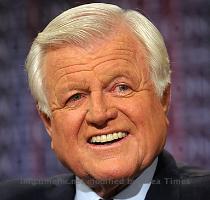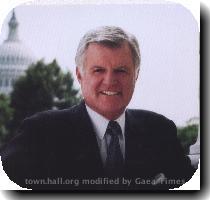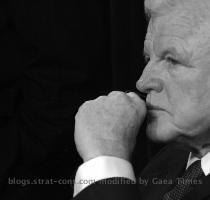Polish air disaster raises questions about pilots being pressured to land in bad weather
By David Crary, APMonday, April 12, 2010
Polish air crash puts spotlight on pilots’ duties
NEW YORK — Even up against tough weather and tight schedules, pilots are supposed to have the last word on when, where and how to land their aircraft. But aviation veterans, trying to make sense of the fog-shrouded crash that killed Poland’s president, say pressures on pilots to keep VIP passengers on schedule can sometimes override safety considerations.
“There are certain CEOs and bosses — you are going to get them to where they want to go, and there aren’t any ifs, ands or buts,” said David Weitz, a pilot who has flown many corporate and union leaders.
“It plays on the pilot’s mind,” said Weitz, of Leesburg, Va. “He may go to some heroics that maybe he wouldn’t normally do, if there’s some pressure from the back of the plane.”
No official conclusions have been drawn about the weekend crash in Russia that killed Polish President Lech Kaczynski and 95 others, including dozens of Polish political, military and religious leaders.
However, the pilot of the government plane had been warned of dense fog at the destination airport in Smolensk and was advised by traffic controllers to land elsewhere, even though that would have delayed observances of a World War II massacre.
The circumstances sparked speculation in Poland that the pilot had been pressured by his superiors to land at Smolensk rather than diverting.
Under standard aviation procedures, a landing has to be cleared by an air traffic controller. If a pilot wants to land despite controllers’ advice, he can declare an emergency and land at his own risk.
“In this country, it’s totally the pilot’s responsibility,” said FAA spokesman Les Dorr. “The only thing the controllers do is relay the weather conditions and the conditions of the runway and so forth. It’s the responsibility of the captain of the aircraft to decide whether it’s safe to land.”
But airlines and aircraft owners sometimes pressure pilots to fly or to land against their better judgment, said safety consultant Jack Casey, a former airline pilot.
Usually, that kind of pressure — known in the industry as “pilot pushing” — is subtle, rather than overt, Casey said. Pilots may feel their job is at risk if they rebuff an employer, he said.
The issue of pilot pushing was raised last year at a House committee hearing on airline safety, which included a discussion of the FAA’s effort to rewrite rules on how many hours airlines can require pilots to work in a day and how much rest they must be given between flights.
John Prater, president of the Air Line Pilots Association, testified that some regional airlines pressure pilots to fly even when they have not had enough sleep.
In general, though, it would be unusual for an airline or an aircraft owner in the U.S. or most other Western countries to attempt to override a pilot’s judgment, Casey said.
“In corporate aviation, you might find a case where the boss has spent $45 million for his Gulfstream and, because of weather or whatever, he’s being told he can’t go where he wants to go” and resorts to pressure, Casey said.
“It’s a pilot’s job to separate themselves from other things in the environment such as a desire get home or a desire to get someplace on time,” said Bill Voss, president of the Flight Safety Foundation in Alexandria, Va. “You are supposed to be weighing things based on the risk.”
However, William Yavorsky, who retired in 2008 after a 40-year career as a private pilot flying political and business leaders, recalled facing intense pressure from one of his former corporate employers — including flying on a six-day, multi-stop flight around the world with working hours far exceeding the safe norms for pilots.
“The captain has the ultimate responsibility and authority, and everybody else is in an advisory capacity, including air traffic control,” said Yavorsky, of Merritt Island, Fla.
“But in reality, we were scared to death of the chairman of board,” he said. “When the boss has to go some place, he can make your life miserable.”
Yavorsky, whose passengers over the years included a former president of the Republic of the Congo and the late Sen. Edward Kennedy, said the top VIPs often were deferential to the pilots, while their executive assistants would be the ones exerting pressure to stay on schedule.
“These are the guys trying to make things work for the boss at your expense,” Yavorsky said.
One potential problem, said David Weitz, is pressure by VIP passengers to land at the airport closest to their final destination, even if safety conditions would be better at a more distant airport.
“Maybe it isn’t the best choice in terms of runway length, or maybe there’s no mechanic there,” he said.
While pressure on pilots is often subtle, investigators have pointed to it as a contributing factor in several air crashes over the years.
In its investigation of the March 2001 crash of a chartered jet at the Aspen, Colo., airport, the National Transportation Safety Board found the pilot had been under intense pressure. The flight was pushing up against the destination airport’s closing time, and the customer who paid for the charter arrived late for departure from Los Angeles.
When the pilot explained he might be forced to divert to another airport, the customer was “irate” and had his assistant call the charter company to say the pilot should “keep his comments to himself.”
Then, minutes before landing at Aspen — at a time so late that the curfew would make a second attempt impossible — one of the passengers stepped forward and joined the crew, buckling himself into the cockpit’s jump seat.
“The presence of this passenger in the cockpit, especially if it were the charter customer, most likely further heightened the pressure on the flight crew to land” at Aspen, the NTSB found. After that crash, charter company Avjet Corp. changed its procedures to ban customers from the cockpit jump seat.
In the August 2001 crash that killed singer Aaliyah on the Caribbean island of Abaco, investigators found that the plane was packed with luggage and passengers exceeding the craft’s weight limit. Airport employees said that baggage handlers and the pilot protested before takeoff, but the passengers demanded they be allowed to bring all the items.
External pressure on pilot was also cited as one of many factors that may have contributed to the April 1996 crash in Croatia that killed Secretary of Commerce Ron Brown and 34 others aboard an Air Force plane. Investigators found that the crew had improperly planned the route.
“The error added 15 minutes to the planned flight time and may have caused the crew to rush the approach,” the Department of Defense said in a briefing on its investigation of the crash.
“It’s a reality of the job almost every day,” said Mark Duell, vice president of operations of Flight Aware, whose Web site tracks status of flights in process. “The guys in the back want to get there, and the guys in the front do have the ultimate call. But when the guy in the back is screaming about firing, the pilots sometimes do give in.”
In difficult conditions, air traffic controllers provide crucial information and instructions for landing, but once they give clearance, they defer to a pilot’s judgment, said Ron Taylor, president of the Professional Air Controllers Organization, which represents about 300 tower workers at various airports.
“The pressure’s going to be on the pilot. The controller’s just advising, saying this is what we’ve got, this is the current weather,” said Taylor, formerly a controller at Palm Beach International Airport and Miami Air Route Traffic Control Center. “The controller….can’t stop him.”
At U.S. airports, it is not uncommon for a pilot encountering bad weather to miss on a first approach to the runway and try again, Taylor said. But if a second attempt also fails, the rule of thumb calls for diverting the flight to a nearby airport.
In such an instance, Taylor said, there’s little tension between traffic control and the crew, with most pilots maintaining a calm professionalism that betrays little hint of any pressures they may be under.
“There could be people in the back or whatever, saying ‘I want to get on the ground.’ That’s all part of the gig. The captain knows his own limitations. He should know the terrain. He should know the approach.”
But Taylor said he was astounded by reports that the crash in Smolensk came on the fifth attempt to land as perhaps a sign of extraordinary pressure on the cockpit.
The pilot “makes the final call. If it’s a good call and things go right or if its a bad call and something goes wrong, he doesn’t have much margin of error.”
Associated Press writers Joan Lowy in Washington and Slobodan Lekic in Kabul, Afghanistan, contributed to this report.
Tags: Accidents, Air Traffic Control, Aspen, Colorado, Eastern Europe, Edward Kennedy, Europe, New York, North America, Poland, Traffic, Transportation, United States



